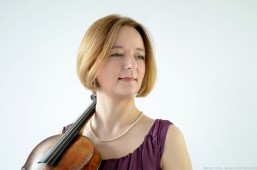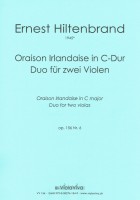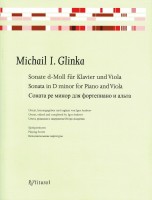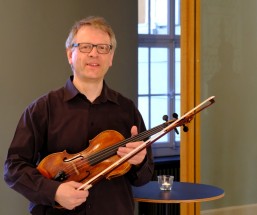
Shifting Attention during Practice – Part 1 |
When practicing, one should pay attention to carefully balance listening, perception and cognition. French violist Marion Leleu described this principle in her presentation «Viola Bites», held on March 17, 2020, at the Bach-Musikgymnasium in Berlin.

Niklaus Rüegg – Marion Leleu’s main goal as an educator is to teach students the synergy between listening ahead, listening in the moment, perception and reflection. She hopes that students will draw conclusions about their own musical activity. «It usually takes years until my students have learned and internalized this method for their own use. However, once the students achieve this goal, they have grown beyond being good musicians and instrumentalists, becoming reflecting pedagogues», states Leleu and continues: «This synergy fortifies and encourages students to perform, listen and perceive in the moment, to share all these beautiful musical moments with the audience.»
Pillar 1: Listening
Leleu describes the first pillar of practice as the continuous listening to one’s own performance without judgement. Performance expression deepens through the honing effect of active listening. Musical listening is complex and comprises six parameters that require continuous and parallel listening: Intonation, rhythm, tone color, tone density, vibrato, ensemble play, and phrasing. Listening without interruption is a particular challenge, since technical difficulties often lead to a momentary loss of concentration with the practicing musician. Possible reasons include fear of the difficult element, self-criticism, or self-rejection.
Pillar 2: Perception
Musician’s perception functions through body sensations. Musicians perceive their bodies with a certain degree of self-awareness. The more intense and complete the perception and motion awareness, the better and quicker a musician draws conclusions between sound and perception. The presenter listed nine perceptional parameters:
- The body’s center of gravity
- Weight distribution between the legs
- Flexibility of the knees
- Perception of the feet
- Mobility of the pelvis
- Elasticity of the belly
- Flexibility of the thorax while breathing
- The natural form and flexibility of the spine
- The ductility of the upper body, respectively the changeability of the angle between viola or violin in relation to the spine
Leleu finds that most players demonstrate «room for improvement» when it comes to the contact points between body and instrument. The following contact points are of central importance:
- Contact between collarbone and bottom of the instrument
- Contact between chin/jaw and chin rest
- Contact between the «V» of the left hand (thumb and index finger) and the neck of the viola, respectively violin
- Contact points between the fingertips of the playing fingers and the string
- Contact points on the bow
- Diagonal pressure of the right thumb
- Tilt and pressure of the index finger
- Perception of the middle finger on the bow’s frog
- Perception and the light “pullingtowards” of the ring finger on the frog
- Pressure of the pinky on the screw.
Both speed and muscular intensity of individual movements must remain perceivable and adaptable every moment. One may ask: «Are my movements balanced, or am I putting too much force into certain movements?» One may also ask: «How does my playing sound? How does my body feel when it produces this or that sound?»
» Click here to go to part 2
More blog posts for you |
Interested in more blog posts? » click here for the blog list
Sheet Music Service |
Sheet music for download
Discover our sheet music, which you can download as PDF, print it out and start playing immediately. Have fun discovering them!» click here for sheet music donloads
» click here for free downloads

(1945, Swiss)
Oraison Irlandaise
Duo op. 156 Nr. 6
for two violas
» to the download

(1947–2019, Israel)
Deliberations Vol. 1
for Viola
Free of charge
» to the download
Printed sheet music

(1804–1857)
Sonata d-minor
for Piano and Viola
Urtext, edited and
completed by
Igor Andreev
» to the edition

(1962)
Fünf kleine Stücke
(Five little pieces)
for Viola and Piano
» to this edition
» to the download
Viola Newsletter |
 Do you don't want to miss any news regarding viola anymore? Our monthly viola news letter will keep you informed.
Do you don't want to miss any news regarding viola anymore? Our monthly viola news letter will keep you informed.
» Subscribe to our viola newsletter for free
|
|
 Visit and like us on Facebook.
Visit and like us on Facebook.
» Music4Viola on Facebook
